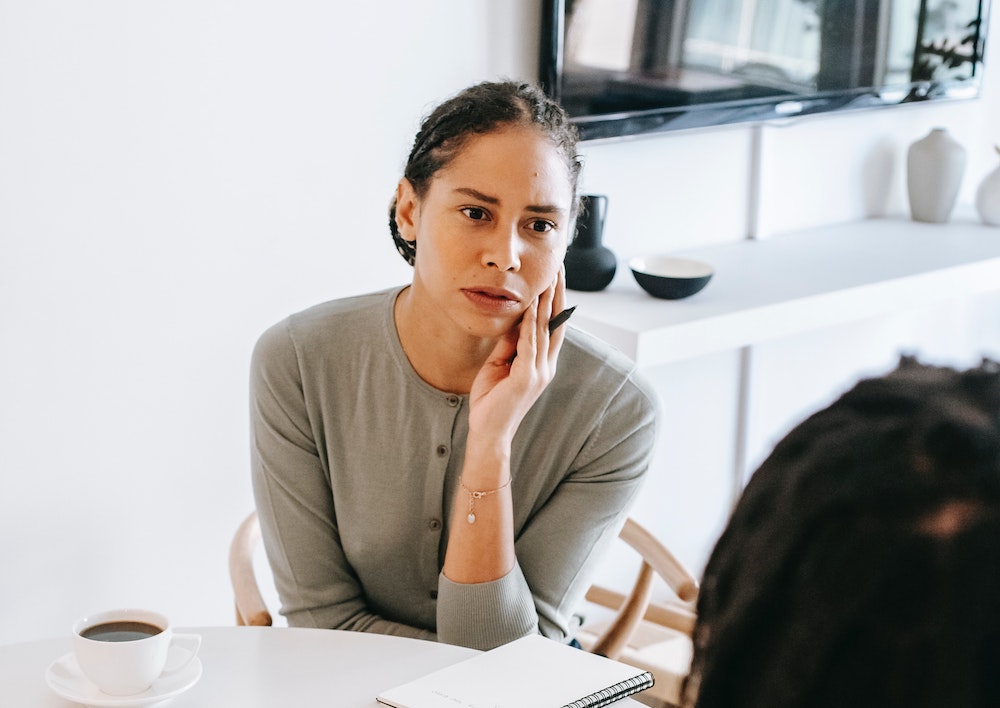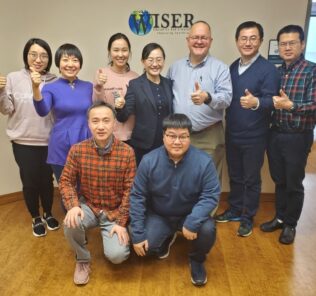Developing Humanistic Competence Through Narrative Medicine
Narrative medicine uses the practice of engaging with the arts – literature, painting, graphics arts and music – to develop humanistic competency across healthcare simulation. This approach seeks to situate the narrative – storytelling — in all forms at the center of medicine and healthcare overall. The following article, guest co-authored by Tony Errichetti PhD MA, Director of Doctor-Patient Communication Assessment at the National Board of Osteopathic Medical Examiners and Virginia Drda, BA Standardized Patient Educator at the New York Simulation Center for the Health Sciences, describes how narrative medicine is being practiced with standardized / simulated patients (SP) and healthcare simulation educators to develop and sustain the humanistic competencies of mindful listening, creative problem solving, self-reflection and increased appreciation for the perspectives of others required in their work.
Rita Charon, MD, PhD, and her colleagues at Columbia University began narrative medicine as a discipline 20 years ago to help physicians learn to listen, honor and validate what Arthur Kleinman refers to as the patient’s “illness narrative.” More recently this practice is moving into other professions requiring active, mindful listening, creative problem solving and tolerating the ambiguity of uncertainty. The use of this approach in the healthcare simulation field is new and noteworthy. Through the humanities we learn to deal with human problems: to think creatively and critically, to reason and to ask questions. Grounded in social justice, narrative medicine exposes participants to diverse voices though art and literature, engendering multicultural tolerance and inclusion.
Little is written in the medical simulation literature on the development of the listening and responding “muscle” so essential to healthcare. Debriefing, with emphasis on this “muscle” is what Donald A. Schön refers to as reflection-on-action, is conducted after a clinical simulation event, with the goal that reflection will occur in-action during actual patient encounters. But how does one learn to listen mindfully, to pay attention on purpose, in the moment, to what another – patient, colleague or a team member – is saying?
Sponsored Content:
Another issue deserving more attention in the literature is creativity, the essential activity of connecting seemingly disparate ideas to solve problems in novel ways. In Rollo May’s “The Courage to Create,” he says creativity occurs in an act of encounter and is to be understood with this encounter as its center. Whether one encounters a beautiful landscape, a learner, or a simulated or live patient, the moment requires seeing the subject as new, unique and original. Indeed, if standardized patient simulation teaches anything the approach teaches that each patient and each situation requires not only a best practices response but also an appreciation that not every patient is the same and must be understood on their own terms. This is the essence of creativity, a re-imagining of perceived reality.
David M. Castro, President and CEO of the Institute for Leadership Education, links the essential task of listening to creative problem solving. He writes that listening is “the cornerstone of creative activity.” When we listen, we pay attention to new ideas and senses that open us up to a “broader field of possible experience.”
Typically narrative medicine workshops develop humanistic competencies through discussing and writing about how selected texts resonate. The workshops are not literature classes with their emphasis upon reading the canon and discerning what the author intended. Diverse works and voices are represented. Participants do “close readings” to discern personal meanings which are then shared with the group. Participant remarks build on previous responses. New opinions and insights emerge, and collective meanings are formed. Finally, a prompt is given and participants are urged to write freely for several minutes and share their writing with the group. Participants then respond to the writer’s text, avoiding giving advice or providing emotional support.
Narrative medicine creates an atmosphere of psychological safety by encouraging participants to share thoughts and speak freely. Although the works sometimes evoke deep personal responses, the workshops are not group therapy sessions and our focus remains on the art that evokes the feelings. What about the piece made you feel that way, what line in the text? No one is an expert – each participant maintains an open mind to the ideas of others. We listen attentively and speak one at a time, avoiding cross talk, interrupting and arguing our points.
Sponsored Content:
COVID-19 has presented us with the opportunity to conduct over 30 workshops online at no charge to over 100 international SPs, trainers and simulation educators. Our goal is to fill a vacuum in our field, i.e. to offer a space or clearing for SPs and SP educators to periodically meet, focus on a work of art, have a discussion and then write about their reflections on what the art and discussions evoked. The workshops offer an opportunity to practice mindful listening and reflecting upon what is heard. These outcomes serve the purpose of strengthening the skills required of them during simulated patient encounters. Workshops also offer a needed respite from the tasks of standardizing and replicating all they do.
SPs occupy a unique position in the healthcare simulation field. They are human surrogates for actual patients, simulating the disease process and the anxiety, fear and concern that come with it. Learners without a great deal of patient experience physically examine them repeatedly. During the course of a day, SPs turn on and off their assigned “condition” at no small cost to their psychological and physical well being. While portraying a patient, they multitask by listening and responding to learners and examinees, observing their demeanor, memorizing their actions, assessing their communication and providing feedback as appropriate. The workshops provide a creative approach to developing listening and communication skills that are utilized in their work with learners.
Finally, narrative medicine provides a needed respite from the rigors of human patient simulation. The Association of Standardized Patient Educators (ASPE) defined “Standards of Best Practice (SOBP) for those working with human role players [SPs] who interact with learners in a wide range of experiential learning and assessment contexts.” ASPE noted the need “to establish SOBP that ensure the growth, integrity, and safe application of SP-based educational endeavors.” Arguably, narrative medicine is an approach to creatively fulfilling Domain 1. Safe Work Environment of the SOBP:
- 1.1.6 Provide SPs with strategies to mitigate potential adverse effects of role portrayal and prevent physical injury or fatigue.
- 1.1.8 Structure time and create a process for de-roling and/or debriefing.
When SPs were asked how the narrative medicine workshops affected them, several responded:
- “Although not therapy, the last 2 sessions have been quite therapeutic for me. In the last month I have experienced a significant loss and a related deep hurt. The readings and discussions about hurt and healing diffused the power of my pain by reminding me that being hurt is a universal life experience.”
- “As an SP I did everything ‘by the book’ and appreciated how we use checklist to assess skills. What’s changed is that because of the literature and art we discuss I see that the students can’t be reduced to a checklist score. They’re people with their own stories. It’s increased my empathy for them.”
- “Thank you for the conversations about art. It’s definitely needed.”
The workshops act as an emotional reset, allowing SPs to express complicated thoughts and feelings they might not otherwise share in their work through the safe container of art.
Learn more about Developing Humanistic Competence Through Narrative Medicine!
Have a story to share with the global healthcare simulation community? Submit your simulation news and resources here!
Tony Errichetti has worked with standardized / simulated patients since 1992. Presently he is Director of Doctor-Patient Communication Assessment at the National Board of Osteopathic Medical Examiners. He established patient simulation centers at the Philadelphia College of Osteopathic Medicine and NYIT-College of Osteopathic Medicine where he started the first MS program in Medical and Healthcare Simulation in the U.S. He started the Simulationist Narrative Medicine Community with Virginia Drda of the New York Simulation Center for the Health Sciences where they hold conversations with simulation professionals about writing and art.
Sponsored Content:






















